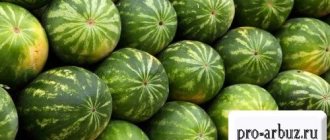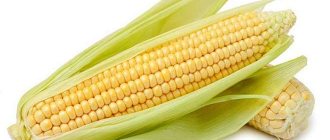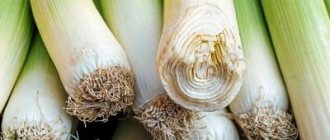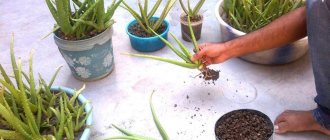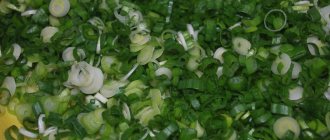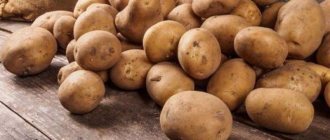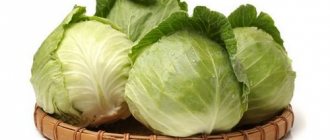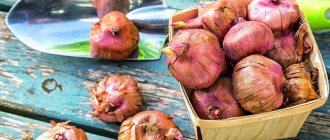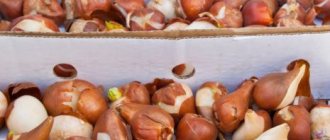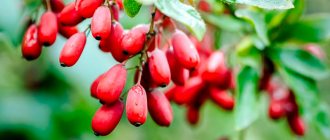Horseradish can be stored in different ways: fresh, frozen or dried.
The first method is preferable: this way the maximum beneficial properties are preserved.
Housewives use dry powder not only as a spice, but also as an antifungal agent when preserving other vegetables.
Horseradish is harvested in the fall. The rhizomes are carefully dug up, trying not to injure them, and the soil is shaken off.
If horseradish is stored in the basement, then there is no need to wash the vegetable: in such storages it is well preserved with a lump of earth, and excess moisture can only damage it.
If horseradish will be stored in the basement, then there is no need to wash the vegetable
After the crop is harvested, it is necessary to trim the leaves and lubricate the sections with iodine to prevent the development of fungal diseases. Then the roots need to be slightly dried in a ventilated place for 24 hours.
The product is sorted - damaged specimens are processed, and intact ones, without rot or damage, are prepared for storage in the cellar.
To ensure that the roots last a long time and retain their beneficial properties, you can store them fresh, dry or frozen, whole or chopped.
Storing fresh horseradish
It is best to store horseradish fresh for the winter.
In an apartment, the roots can be stored on a glassed-in balcony laid in sand. You can also use peat bedding. The roots laid out in containers are sprinkled with peat. This material has antiseptic properties that protect root crops from rot.
Suitable temperature is 0...+3 degrees Celsius, humidity should be 80-90%. Fresh horseradish can be stored for a long time only in a well-ventilated area.
Preservation for the winter with horseradish
In traditional Russian cuisine, there are many recipes for canned seasonings with spicy vegetables. To preserve horseradish for the winter, simple preservatives are added to it: salt, sugar, vinegar. The content of natural antibiotics allows such seasonings to be stored in the refrigerator without heat treatment.
Horseradish with citric acid
Use fresh roots to preserve them for several months. But a spicy seasoning can be made in winter from stored or frozen roots. Required:
- 0.5 kg of spicy vegetable;
- 15 g salt;
- 15-20 g sugar;
- 10 g citric acid powder.
Grind the prepared rhizomes into a pulp (with a meat grinder, blender, or grater). Add acid, salt and sugar, mix and leave until the crystals dissolve for 10-15 minutes. Mix again and place in sterile jars, close tightly and store in the refrigerator.
The seasoning matures over several days, gradually acquiring piquancy. It can be consumed immediately after preparation. Within 2 months the severity becomes less pronounced.
The amount of sugar can be changed to taste. It softens the hot taste, and spicy lovers often don’t add it at all.
Horseradish with vinegar
You can also store grated horseradish in vinegar. Compared to citric acid, vinegar has its own flavor and makes the seasoning a little piquant. They use wine, apple, and simple table products.
For 1 kg of horseradish roots take:
- 1-2 tbsp. l. vinegar (9%);
- 40 g salt;
- 40 g sugar.
Make a paste of horseradish, add the remaining ingredients and mix. Store in sterile jars under tight lids in the refrigerator.
If you want to get a more liquid sauce, then make a marinade from the indicated spices, bringing 0.5 liters of water to a boil and dissolving the acid and other additives in it. Horseradish gruel is poured with marinade and placed in jars.
Salad with horseradish and vegetables
A spicy vegetable salad is suitable as an accompaniment to potato dishes, meat, jellied meat and dumplings. To prepare you will need:
- 1 kg horseradish;
- 1 kg of bell pepper (sweet);
- 2 kg of dense tomatoes;
- 300 g garlic;
- 100-150 ml vegetable oil;
- 50 g salt.
Chop the rhizomes on a coarse grater, chop the peppers and tomatoes, chop the garlic. Place all ingredients in a saucepan, add salt, add vegetable oil and add spices to taste (bay leaf, black and allspice, etc.). Bring to a boil over medium heat and reduce the heat to low. Warm up for 30-40 minutes, place in sterile jars, close and cool. Store in the refrigerator or cellar.
Sauce with apple and carrots
The beautiful, bright sauce has a mild taste and is suitable for those who do not like spicy things too much. For 1 kg of grated horseradish, take 0.5 kg of pulp from apples and carrots. Pour 40 g of salt and 40-50 g of sugar into boiling water (0.5 l), bring to a boil again and pour in the prepared mixture. The sauce is cooled and placed in sterilized jars.
Sauce with mayonnaise
Mayonnaise sauce with the addition of spicy seasoning is a classic addition to jellied meat, cold roast, and dumplings. The moderately hot seasoning is not stored, but is prepared for consumption within 1-2 days. To prepare the sauce, you can use fresh roots or preparations with vinegar or citric acid.
A mass of crushed horseradish is mixed with mayonnaise in a 1:1 ratio. You can use the seasoning immediately, but it is better to let it sit for 1 hour.
Root vegetable sauce with beets
Adding beet juice or chopped root vegetables not only tints the classic grated horseradish, but also makes the seasoning milder. It is better to use baked beets: the color lasts longer and does not take on a gray tint.
Bake medium beets (about 200 g) in foil until tender and mince along with 0.5-0.7 kg of fresh horseradish roots. Add 30 g of salt and sugar and 30-50 ml of vinegar (to taste) to the pink mass. Mix everything and store in a sterile container in the refrigerator.
Instead of baked beets, you can use fresh vegetable juice, adding it for coloring as needed.
Khrenovina in Russian
Horseradish is a product made from chopped horseradish and vegetables. The seasoning is prepared without heat treatment. It can be stored only because of the preservative properties of salt, sugar, and the hottest vegetable itself. Horseradish is used as a seasoning for various vegetable and meat dishes and is eaten as an addition to sandwiches.
For 1 kg of horseradish take:
- 0.3 kg garlic;
- 1-1.5 kg of tomatoes;
- 50 g sugar;
- 40 g salt;
- add red and black pepper and other aromatic spices if desired.
All vegetables are washed, peeled and passed through a meat grinder. Add spices to the mixture and mix. The sauce is distributed into sterilized containers of small volume (300-500 g), covered with plastic lids and stored in a cool place.
Variations on the classic recipe include the addition of herbs and bell pepper. This makes the range of flavors wider.
As a dry spice
First, the root is peeled, washed and peeled. After this, the root is crushed and dried in the oven over low heat. Well-dried raw materials can be easily ground in a coffee grinder.
The resulting powder is poured into a glass container and stored in a cool place. Dry powder is used as a preventive measure against mold during preservation.
Dry horseradish is good to add to sauces
If you add one tablespoon of dried root to the brine for cucumbers, then fungus will not appear in it and it will not become cloudy. The powder is also added to already opened jars of canned vegetables: this way they are stored longer without mold.
Dry horseradish is good to add to sauces (for example, adjika) to add a piquant taste.
Each method of storing horseradish root has its own subtleties:
- If the roots will be stored in the refrigerator, they are first washed and thoroughly dried. To increase shelf life, they should not be cleaned.
- Frozen vegetables can be stored in the freezer for about a year. You can freeze both whole and ground roots. Be sure to wash and dry them before storing.
- Drying is an effective storage method. The roots can be dried by simply laying them out in the shade, but it is better to do this in the oven. The washed root vegetables are cut into small pieces and laid out in one layer on a baking sheet, dried for 1.5-2 hours while maintaining a temperature in the oven of up to 60 degrees Celsius. After drying, it is better to store the root in cloth bags or glass jars. You can make seasoning from it by simply grinding it.
Where to store horseradish in jars
There are many recipes for processing horseradish that allow you to fully use it. Salting and marinating will take time, but the beneficial substances will last longer.
Preparing horseradish in jars for the winter
Option 1
To prepare twisted horseradish in jars, take: 250 ml of water, 1 tbsp. l. sugar and salt.
- peel and chop 1 kg of horseradish;
- boil water, add sugar and salt;
- add the grated roots, stir;
- place in jars with nylon lids.
The product is stored at a temperature no higher than +5 degrees for 1-2 months. Before serving, dilute with sour cream in a 2:1 ratio.
To preserve it for a longer period, add 125 ml of apple cider vinegar to the base and only then the twisted horseradish itself. When preparing this way, jars should be sterilized, filled and closed with tin lids.
With this preparation, the shelf life of the product reaches several years.
Option 2
To prepare a seasoning based on horseradish (horseradish), add to a volume of 200 g: salt 1 tsp, sugar 1 tbsp, wine vinegar 7 tbsp, ground beets 1 pc.
- chop the roots (preferably juicy and thin);
- Divide the resulting liquid slurry into jars and place in the refrigerator.
The shelf life reaches 3-6 months.
Maintain a power of 600-700 Watts, otherwise hard rhizomes will not be able to turn. When handling, protect your eyes, nose, and respiratory tract.
In the cellar or basement
Attention! Horseradish is well stored in a cellar or basement along with other vegetables. With such a bookmark, less labor will be required and the internal space of the room can be saved.
Horseradish will last until spring if you think about arranging storage in advance. It is necessary to thoroughly clean the cellar, remove the remains of rotten vegetables, whitewash the ceiling and walls, and treat the shelves and drawers from putrefactive bacteria.
An effective method is to use smoke bombs, but you must remember that this treatment requires at least 2 weeks of storage before adding food.
If the basement is ready, you can store root vegetables:
- Prepare the required number of boxes.
- Pour sand, dry sawdust or peat into the bottom of the container, and place the roots on this bedding so that they do not touch each other.
- Fill the first layer and continue laying the roots, covering them with sand or sawdust.
During storage, fruits must be inspected once a month. All rotten or diseased ones must be removed immediately, as they can cause damage to the rest of the horseradish.
If the roots begin to dry out too much, you need to pour wet sand into the box, otherwise the vegetable will become flabby. Alternative storage method: Unpeeled, dried roots are tied into loose bunches and hung from the ceiling.
This kind of horseradish dries quickly, but it is convenient to do this if the workpiece is small: you can save space in the basement.
Benefits and composition of horseradish
The vegetable not only adds piquancy to dishes, but also consists of a lot of substances necessary for the body. If you study the content of vitamins and minerals in it, horseradish can surpass even multivitamin complexes.
- Ascorbic acid.
- Phytoncides (powerful antibacterial substances).
- Vitamins of all groups.
- Essential and mustard oils.
- Potassium.
- Magnesium.
- Calcium.
- Iron.
- Manganese.
- Rough fiber and protein.
With all this abundance, horseradish has a calorie content of slightly more than 50 per 100 grams. But the amount of vitamins will directly depend on how you can preserve horseradish in the winter at home.
It is not difficult to prepare this vegetable for future use. Both roots and leaves are suitable for storage. It is impossible to keep the greens until spring, but the lower part is quite possible. There are a great many connoisseurs of horseradish as a seasoning. Therefore, the variety of recipes and preparations with it never ceases to amaze. Horseradish is dried, pickled, frozen, salted and prepared into hot sauces.
At the same time, its taste almost does not change. A mixture of horseradish and tomatoes, prepared in the fall, remains hot and vigorous until summer. This is the most popular seasoning for meat. But for high-quality preservation of horseradish roots and leaves, the harvest should be harvested correctly and on time.
Freezing
To store in the freezer, the roots are cleaned, washed thoroughly and lightly dried. Cut into cubes, place in freezer bags or containers, and place in the freezer.
It is difficult to grate the root
It is recommended to store horseradish for about six months, but after defrosting the vegetable will not be so spicy.
Preparation for storage
In order for horseradish to remain fresh for a long time, it must be prepared correctly. Usually the root is dug up for storage in spring or autumn, it all depends on the variety. Harvesting is recommended in dry weather. Carefully dig up the plant with a shovel, shake off excess soil well and cut off the leafy part. Inspect the root crop for damage and select spoiled or rotten specimens: they are not suitable for fresh storage. You should not wash the roots after digging; it is better to leave them to dry in a warm, ventilated place for a day. After this, you can send the roots to a permanent storage location.
To make horseradish last longer, treat the cuts with iodine solution.
There are different methods for storing horseradish fresh or in seasonings. Typically, root vegetables are stored in the refrigerator, cellar or freezer. Roots can be preserved both in their original and processed form: dried, pickled, canned with other vegetables . Next, we will look at the most popular methods for storing root vegetables at home.
Drying
Roots that are not suitable for long-term storage are dried.
They are cleaned of soil residues, the tops are removed, and small roots are cut off. After this, they are washed and the skin is removed. It is not recommended to soak horseradish roots before drying: they absorb moisture well.
After washing, they are blotted with paper towels and air dried in the shade until completely dry. You can’t dry them in the sun: in such conditions they lose a lot of useful substances.
The “safest” way to process raw materials is in a food processor or blender
Drying is carried out in different ways:
- After cleaning, the roots are cut lengthwise and placed on a baking sheet in one layer. After this, the baking sheets are placed in the oven and the temperature is set to 50-60 degrees Celsius; in such conditions, with the door open, the horseradish is kept for 40-90 minutes. After drying, the roots are stored in glass containers.
- After cleaning, the roots are cut into slices no thicker than 5 mm and similar to the previous method. The dried cuts can be stored in a glass container or ground in a blender.
- After cleaning, the roots are grated on a medium grater, spread in a thin layer on a baking sheet and dried in the oven. The dry mass is poured into jars.
It is believed that horseradish must be peeled to white pulp, completely removing the top layer from the root vegetable. You shouldn’t do this: the peel contains many useful substances, for this reason it is advisable to peel off a thin layer of skin.
How to store leaves
The leafy mass of the plant is rich in carotene, vitamins, essential oils, and phytoncides. The leaves have long been used for preparing salads, marinades, and preserves.
You can prepare horseradish leaves for the winter by drying or freezing. Pre-wash and thoroughly dry the foliage. After grinding, process using the chosen method.
- Frozen foliage will last 9-12 months and is suitable for canning.
- The dried product is usually crushed and used for seasoning soups and marinades. The shelf life is up to six months, then the leaves turn pale and are thrown away.
- Fresh leaves in an airtight bag will keep on the vegetable rack for 2-3 weeks.
Do you know that…
The plant is used for early forcing to obtain vitamin-rich greens for making salads.
There are many different ways to prepare healthy roots. Choose the appropriate option, and the aromatic seasoning will strengthen your immunity, protect against diseases, and add an interesting flavor to your dishes.
Cleaning the roots with a steel wool
Using a washcloth, you can remove dirt and effortlessly remove skin from the roots.
Cleaning steps:
- Soak the horseradish in water in advance.
- Use steel wool to remove dirty skin.
- If necessary, rinse the root vegetable under running water.
- Use a knife to cut the tops off the root vegetables.
The advantage of this method is that the vegetable is washed and peeled at the same time.
But if there is a large amount of stuck soil, you must first soak the fruit in water, and then wash off most of the dirt. Using steel wool is a quick way to clean the roots without hurting your hands while scrubbing.
